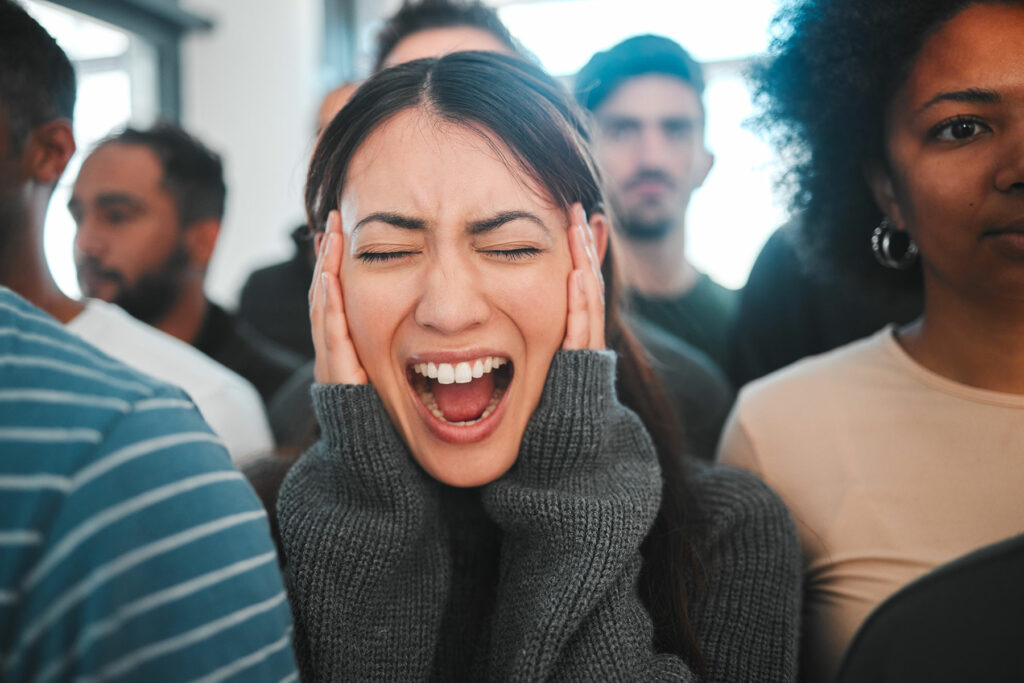Are you or is someone you love suffering from anxiety or panic disorders? Everyone feels anxious from time to time. It’s quite normal, for instance, to be nervous when facing an important decision, an uncomfortable encounter, or awaiting news, an answer, or result. Anxiety and panic disorders are different. These conditions have the potential to significantly interfere with daily life, relationships, work, and activities.
While medical researchers have yet to identify a primary cause, recognizing different types of anxiety and panic disorders can help you on the journey to recovery. Understanding more about the disorders and how they affect you can lead to better management of your symptoms—or it can help you recognize when you need to seek help.
Call Honey Lake Clinic at 888.428.0562 today to learn more about our options for anxiety treatment in Greenville and how to get started.
What Are Anxiety and Panic Disorders?
Anxiety is a feeling of worry or fear that ranges from mild to severe and can be triggered by certain situations, events, or memories. Panic disorder is an intense form of anxiety that involves panic attacks—sudden feelings of intense fear or terror. These episodes may last for only a few minutes or longer and are accompanied by physical symptoms such as rapid breathing, sweating, increased heart rate, and dizziness.
There are seven types of anxiety and panic disorders that can occur in adults and children. These include general anxiety disorder, phobias, post-traumatic stress disorder (PTSD), obsessive-compulsive disorder (OCD), social anxiety disorder, agoraphobia, and panic disorder.
1. General Anxiety Disorder
General anxiety disorder (GAD) is defined as an excessive and persistent feeling of worry, fear, or unease about a variety of situations. People with GAD often feel on edge, anticipate the worst, and experience difficulty concentrating. The physical symptoms associated with this disorder can include fatigue, headaches, muscle tension, restlessness, and difficulty sleeping.
2. Phobias
Phobias are extreme and irrational fears or anxiety triggered by a specific object or situation. Common phobias include:
- Fear of heights (acrophobia)
- Fear of closed spaces (claustrophobia)
- Fear of spiders (arachnophobia)
- Fear of flying (aerophobia).
Unlike generalized anxiety disorder, the fear associated with phobias is typically limited to specific objects or situations. People who suffer from phobias may go to great lengths to avoid the object of their fear, even if it results in extreme distress or interferes with their day-to-day life.
3. Post-Traumatic Stress Disorder (PTSD)
Post-traumatic stress disorder (PTSD) is an anxiety disorder that occurs after a person has experienced a traumatic event, such as a natural disaster, war, or violent crime. People with PTSD may experience flashbacks, nightmares, and severe emotional distress when reminded of their traumatic experience. Other symptoms include anger, guilt, trouble sleeping or concentrating, feeling tense or jumpy, and being easily startled.
4. Obsessive-Compulsive Disorder (OCD)
Obsessive-compulsive disorder (OCD) is an anxiety disorder characterized by intrusive thoughts or obsessions and repetitive behaviors or compulsions. When people with OCD are exposed to the object of their fear, they may experience intense anxiety and distress. This can lead them to perform specific rituals such as repeatedly washing their hands, counting items, arranging objects in a certain way, or repeating certain phrases.
5. Social Anxiety Disorder
Social anxiety disorder, sometimes referred to as social phobia, is an intense fear of being judged or evaluated by others in social situations. People with this disorder may experience extreme distress when talking to strangers, attending gatherings, speaking in front of a group, or eating in public. As a result, they tend to avoid social events and withdraw from relationships.
6. Agoraphobia
Agoraphobia is a type of anxiety disorder characterized by an intense fear of being in certain situations or places where it may be difficult to escape or get help. People with agoraphobia often avoid going out in public, driving alone, riding the bus or train, and using elevators.
7. Panic Disorder
Finally, panic disorder is an anxiety disorder characterized by recurrent and unexpected panic attacks. These episodes typically involve a sudden feeling of terror, accompanied by physical symptoms such as rapid breathing, increased heart rate, sweating, dizziness, and chest pain. People with panic disorder may avoid certain places or activities due to fear of having another attack.
Getting Help for Anxiety and Panic Disorders
If any of these types of anxiety or panic disorders sound familiar and are affecting your quality of life, it’s important to seek help. You’re not alone, and there is hope. A treatment plan tailored to your specific concerns can help you learn how to manage and reduce the intensity of your symptoms.
Call Honey Lake Clinic Today for Anxiety Treatment in Florida
At Honey Lake Clinic, our experienced staff will work with you to develop a personalized plan for your anxiety and panic disorder treatment. Our treatment approach is rooted in innovative therapies that focus on understanding the underlying causes of the condition, developing new coping skills, and providing education on the disease.
For treatment that addresses your mind, body, and spirit, call 888.428.0562 or reach out online today to get started on your journey to recovery. Together, we can create an individualized plan for managing anxiety and panic symptoms.



